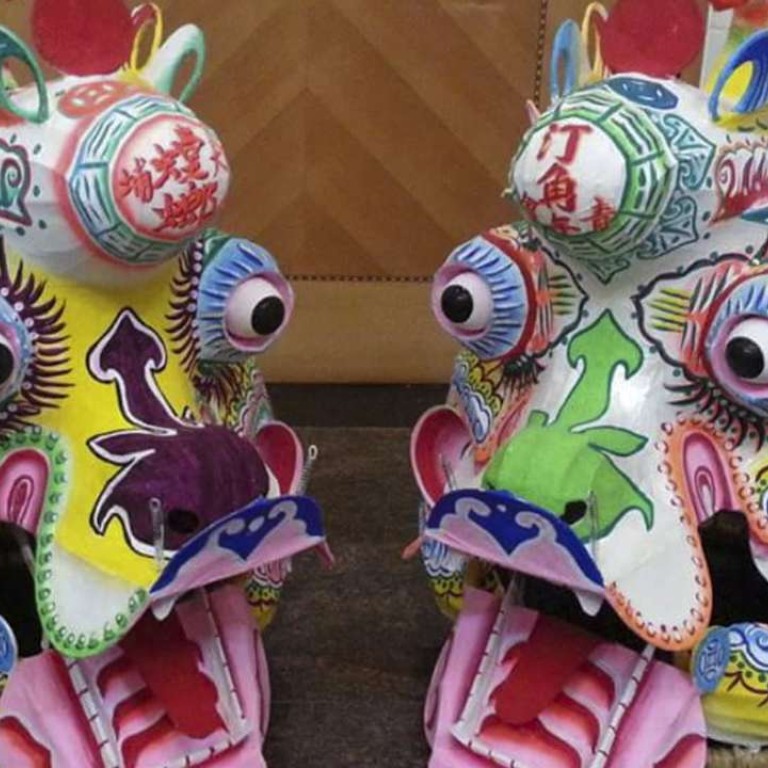
The Hong Kong paper artisan who makes flower altars and lanterns for Lunar New Year
Meet Kenneth Mo, the craftsman behind the colourful decorations and ornaments that will be used in New Territories traditions to welcome in the Year of the Rooster
Demand for flower altars and lanterns, a village folk tradition at Lunar New Year in Hong Kong’s New Territories, makes this one of the busiest times of the year for Kenneth Mo Cheuk-kei, a paper artisan.
Several bamboo frames that will be made into dragon and lion heads sit in his workshop in Yuen Long, as well as lanterns in various stages of completion.
Standing next to a bamboo frame for a lantern, Mo, 45, who has been in the business for more than 25 years, explains it will be used in a lantern lighting ceremony.
“When families have a male child born during the year, they present these paper lanterns to the ancestral hall, where they are hung from the ceiling with a hook to show the ancestors how many boys were born,” he says. The lanterns are lit, either with candles or light bulbs, from the seventh day of the lunar new year to the 15th day.

The ceremony is important to indigenous villagers because they can register newborn sons to entitle them to future benefits, such as the right to build a village house in the future.
Mo says the lanterns are usually round and can be as big as a dinner table that seats a dozen people.
Another tradition celebrated by villagers is the flower altar – a tall tower, made mostly of colourful paper with many decorations and figurines on it with auspicious meanings.
Especially popular during the 1940s and ’50s, the flower altar can be considered a sedan chair for the deities, whose job it is to protect the villagers, Mo says.

The altars have several colourful layers, the bottom of which is usually made of cloth, followed by a second layer that features the image of the deity placed in the centre, decorated with two dragons on each side, along with figurines of the Eight Immortals, humans who have attained immortality, and two guards that are known as “Thousand Mile Eyes” and “Wind Accompanying Ear”.
The third layer is a large bat motif that is considered auspicious.

Mo says flower altars can be up to 10 metres in height and have many layers, but these days they are typically four metres tall and comprise three layers. Each three-to-four layer altar takes about 20 days to complete because there are so many components involved.
Many of the individual pieces need to be sourced elsewhere, mainly from China, as items like the deity figurines are not made in Hong Kong any more.

These altars are put up during Lunar New Year celebrations and afterwards; some are highly sought after, particularly those featuring the God of Purple Subtlety, or zi wei, which are considered to bring good luck to poultry and pig farmers.

